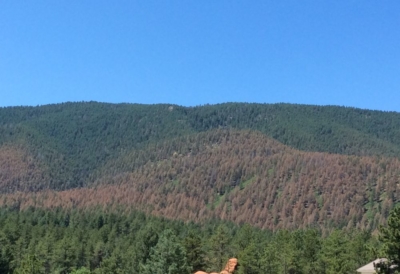Douglas-fir Tussock Moth Outbreak
According to the Colorado State Forest Service’s 2015 report, last year Douglas-fir tussock moth outbreaks comprised “the most widespread single-year acreage of Douglas-fir tussock moth infestation ever recorded in Colorado.” The insects and their larvae defoliated an estimated 26,000 acres of Douglas –fir trees, true firs and spruces.
Defoliated trees primarily blue spruces are susceptible to bark beetle attacks like Ips beetles and the combined destruction can kill the trees. At the very least, weakened trees that survive become a fire hazard.
Several Front Range communities including Perry Park, Valley Park, Conifer, urban areas of Denver, Colorado Springs, Fort Collins, and forested subdivisions west of Boulder have shown 
Douglas-fir Tussock Moth Controls
State and national forestry data show that Douglas-fir tussock moth outbreaks typically last two to three years. Then a virus called wilt disease reduces the population to a normal level that natural predators – birds, parasitic wasps, the tachinid fly and spiders – can control. Within the next seven to 10 years, however, a new infestation cycle begins.
The Dougas-fir tussock moth’s life begins when egg masses containing as many as 300 eggs are deposited on a stem. A frothy substance that contains body hairs of the female moth covers the mass – called an egg hatch – and the eggs overwinter on the stem. Upon hatching, the larvae begin feeding on needles moving from top to bottom, sometimes completely stripping host trees in a single season.
Chemical treatment requires spraying the top of a tree, shortly after eggs have hatched.
Professional treatment of a Douglas-fir tussock moth infestation can ensure the safety of the technician applying pesticide as well as nearby humans, animals and geography. If you suspect a Douglas-fir tussock moth infestation on your property, contact SprayTech, Colorado commercial and residential tree-spraying specialists, at 720-248-0000.

